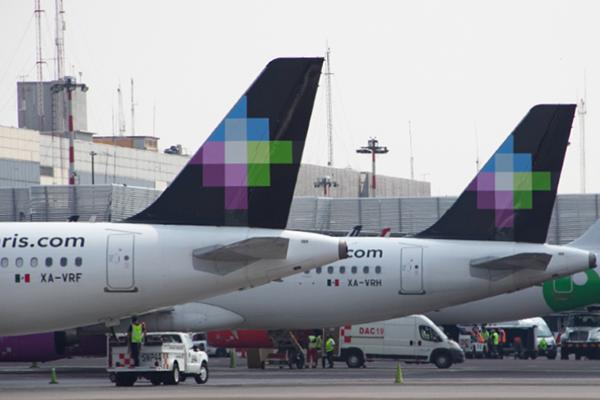Routes Reconnected: Volaris has 'once in a lifetime' opportunity in Mexico City

Volaris is eyeing further growth at Mexico City Juarez International (MEX) as the ULCC seeks to exploit opportunities created by the COVID-19 pandemic.
CEO Enrique Beltranena claimed the airline has a “once in a lifetime” chance to expand from Mexico’s main international gateway—an airport where securing slots was notoriously difficult before the coronavirus crisis. He was speaking on Dec. 3 during the Routes Reconnected 2020 conference program and interviewed by Dave Appleby, Routes and ASM director Latin America and the Caribbean.
The carrier started operating seven new point-to-point international routes from MEX during November, connecting the capital city with destinations including Dallas Fort-Worth (DFW), Fresno Yosemite (FAT) and Houston (IAH).
Beltranena said the financial problems encountered by national carrier Aeromexico and LCC Interjet—and their associated fleet reductions—means more slots are opening up. He added Volaris remains well placed to take advantage and additional routes are planned.
“When you look at Aeromexico, 84% of their ASMs (available seat miles) were departing from Mexico City, while 78% of Interjet’s ASMs were departing Mexico City,” Beltranena said. “But there’s probably about 80 aircraft that have left Mexico City Airport over the last six to nine months.
“That’s a market that we therefore need to try to serve and take advantage of. In the near term, as the Mexican market continues to recover, we see it as a once in a lifetime opportunity to grow there.”
Since the onset of the pandemic, Aeromexico has shrunk its fleet from 125 aircraft to 101 at the end of the third quarter of 2020, with further reductions planned as the airline navigates its way through a voluntary Chapter 11 restructuring process in the US.
Interjet had 61 Airbus narrowbodies in service as recently as March, but CAPA Fleet Database data shows its Airbus fleet has since dropped to three. Only seven Interjet aircraft are currently in service—all of which are Sukhois.
“There was a de facto grandfather rights system over slots at Mexico City—but that only applies if the operators are current in their payments,” Beltranena said. “That means there is a big opportunity for Volaris to operate in Mexico City.”
According to figures provided by OAG Schedules Analyser, Aeromexico operated 11.4 million departure seats from MEX in 2019, giving it a 36.6% capacity share of all departing seats. Interjet offered 7.4 million for a 23.7% share, while Volaris provided 4.6 million for a 14.6% share.
The latest data for this week (w/c Nov. 30, 2020) shows Aeromexico has a 39.2% capacity share and Volaris has a 24.6% share. Interjet’s share has dropped to 1.7%, with the carrier offering just 5,859 weekly departure seats. This compares with 159,072 during the same week a year ago.
Volaris transported 1.6 million passengers during November 2020, an increase of 14% versus October. Capacity last month measured in ASMs was 98% compared with November 2019. The ULCC expects to restore 100% of capacity in December.
Beltranena said: “The demand recovery in Mexico is somewhere around 60% of where it should be. So why are we back at 100% capacity in December when demand is only 60%?
“Our load factor in November was about 80%. We’re not putting capacity back for the sake of it—we’re filling the aircraft. There we see a fundamental difference versus some other airlines.”
Beltranena said Volaris’ focus on VFR and leisure routes is driving demand. He also praised the Indigo Partners-backed airline’s marketing efforts, saying its campaigns during the COVID-19 crisis have helped to tempt passengers off busses and on to planes.
Photo credit: Aeropuerto Internacional Benito Juárez Ciudad de México (AICM)
